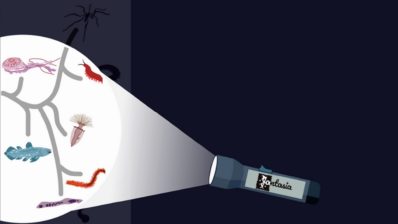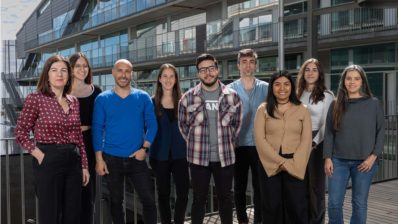The way atoms are arranged in space determines whether a molecule is ‘right-handed’ (it twists towards the right) or its mirror image, ‘left-handed’. In nature, as far as we know, all molecules have only one possible arrangement: in DNA and RNA, the sugar of the backbone is right-handed, while in proteins, the amino acids are left-handed.
But scientists, always trying to push the boundaries of knowledge, have long wondered whether there could be alternatives to life as we know it. A few years ago, some started trying to synthetically create mirror images of existing molecules. And they succeeded. The next step, though – creating the whole molecular machinery needed to sustain a living cell, fully made of mirror molecules – is raising some alarms.
A group of world-leading scientists have recently published a report and a policy forum article in Science calling for a halt on research to create “mirror life” microbes, concerned that they could present an “unprecedented risk” to life on Earth.
In this article, we discuss what is mirror life, and its potential advantages and risks with two researchers at the Barcelona Biomedical Research Park (PRBB).
Why would mirror life be interesting?
We don’t know why molecules exist in only one conformation of the two possible ones. “For all we know, it could have been the other one, so that proteins are twisted to the right, instead of the left, for example”, says Ricard Solé, researcher at the Institute for Evolutionary Biology (IBE: CSIC-UPF) and author of “The logic of monsters”, a book on the limits to the diversity of life. “Life on our planet has an asymetry, and this could be for a reason – or just a historic accident. This has been a debate for years, in particular regarding the origin of life. And mirror research could give us an answer”, he concedes.
Beyond curiosity and the fundamental understanding of life, others cite potential applications of mirror molecules. Although for that we already have synthetic biology, says Solé.
Javier Santos-Moreno, a researcher at the UPF Department of Medicine and Life Sciences (MELIS-UPF) who has worked on a project to modify skin bacteria to treat atopic dermatitis, agrees. “We have advanced a lot in synthetic biology for biomedicine or bioremediation“.
He tells us about colleagues who are creating bacteria with an alternative genetic code. This makes them more resistant to attack by phages (bacterial viruses) and makes it impossible for them to mix with natural bacteria and pass on their DNA. “It is as if the instruction manual of these synthetic bacteria is in a foreign language. So if it ends up in a ‘normal’ bacteria, it won’t understand the instructions and will ignore them”. Importantly, however, because the molecules that make up the DNA and proteins are the same, the synthetic bacteria can be recognised by our immune system, broken down by existing enzymes, and so on. “So if something goes wrong, the pages of the book can be torn out,” says Santos-Moreno.
Why could mirror life be risky?
That’s not the case with a potential mirror bacteria. Continuing with the book analogy, a mirror bacteria would have a book that is not in a different language, but from a different material. “It would be a metal book, which means it would be indestructible by the tools we have“, says Santos-Moreno. So the advantages of mirror life – that it would be more resistant, more stable, more unrecognizable – become its risks. It’s the two sides of a coin.
A viable mirror bacteria would be, the authors of the Science commentary say, at least a decade away. Or even longer. “We are still far away – we would need to advance in two parallel fields: the creation of individual mirror molecules and the ability of creating a synthetic organism from scratch”, says Santos-Moreno. But we are advancing, in both fields, and biology is not linear. Things that seemed impossible 20 years ago, we’ve already left behind… And once both fields have reached a certain point putting the two together – creating a synthetic organism from scratch, with mirror molecules instead of the natural ones – might be possible”.
“I doubt mirror life would be viable at all. But it’s a shame to create a hysteria that can prevent knowledge advance”
Ricard Solé (IBE)
“I actually doubt such a structure would be viable at all“, differs Solé. “People often are so focused on their very specialised field that they forget the bigger picture, and ecological realities, where the fight for resources has made the existence of any other life but the one we have impossible”.
“And to be honest, I think the potential applications of mirror life are far-fetched – the same can be done with synthetic biology, in a much easier and probably safer way. What’s a shame for me, though, is that we might be generating some hysteria about the topic that might prevent knowledge advances”, remarks Solé. “It reminds me of the 80s-90s, with recombinant DNA: a public opinion was created based on no scientific evidence that genetically modified organisms freed to the environment could have unintended consequences, and this ended up limiting the experimentation”.
“Creating an organism capable of reproducing, without competitors and without tools to stop them would be very risky”
Javier Santos-Moreno (MELIS-UPF)
Santos-Moreno disagrees slightly. “With mirror molecules on their own, the risk is limited. But if you create a whole organism, capable of reproducing, without competitors and without tools to stop them… that’s something else“, he says. “It seems to me that the possible advantages are not so clear and the risk is very high. So I think it’s good that these researchers – some of whom have been involved in mirror research themselves – are calling for precautions. Maybe we would never manage to create mirror life anyway, but better safe than sorry”, he concludes.







